
Huascaran National Park: A Pristine Andean Paradise
Explore Huascaran National Park: Peru's majestic Andean sanctuary, offering unmatched adventure, stunning landscapes, and rich biodiversity for an unforgettable experience.
Huascaran National Park, located in the heart of the Peruvian Andes, is a haven for nature lovers and adventure seekers alike. This UNESCO World Heritage site boasts some of the most stunning landscapes in South America, from towering snow-capped peaks to lush valleys and crystal-clear lakes. The park is home to Huascaran, the highest mountain in Peru, which offers breathtaking views and challenging climbs for mountaineers. Visitors to Huascaran National Park can enjoy a wide range of activities, such as hiking through picturesque trails, exploring ancient ruins, and observing diverse wildlife, including the elusive Andean condor. The park's unique ecosystem is also home to a variety of flora, including the iconic Puya Raimondii, the tallest flowering plant in the world. Whether you are looking to conquer its peaks or simply soak in its natural beauty, Huascaran National Park provides an unforgettable experience. The park is easily accessible from the nearby city of Huaraz, which offers a range of accommodations and amenities for tourists. Make sure to bring your camera, as the park's dramatic scenery is perfect for capturing memories that will last a lifetime.
Local tips in Huascaran National Park
- Visit during the dry season (May to September) for the best weather and clearer hiking conditions.
- Acclimatize in Huaraz for a few days to avoid altitude sickness before heading into the park.
- Hire a local guide for a safer and more informative trekking experience.
- Pack warm clothing and rain gear, as weather conditions can change rapidly.
- Bring cash, as there are limited ATM facilities in remote areas.
- Respect local wildlife and plant life by sticking to designated trails.
Huascaran National Park: A Pristine Andean Paradise
Huascaran National Park, located in the heart of the Peruvian Andes, is a haven for nature lovers and adventure seekers alike. This UNESCO World Heritage site boasts some of the most stunning landscapes in South America, from towering snow-capped peaks to lush valleys and crystal-clear lakes. The park is home to Huascaran, the highest mountain in Peru, which offers breathtaking views and challenging climbs for mountaineers. Visitors to Huascaran National Park can enjoy a wide range of activities, such as hiking through picturesque trails, exploring ancient ruins, and observing diverse wildlife, including the elusive Andean condor. The park's unique ecosystem is also home to a variety of flora, including the iconic Puya Raimondii, the tallest flowering plant in the world. Whether you are looking to conquer its peaks or simply soak in its natural beauty, Huascaran National Park provides an unforgettable experience. The park is easily accessible from the nearby city of Huaraz, which offers a range of accommodations and amenities for tourists. Make sure to bring your camera, as the park's dramatic scenery is perfect for capturing memories that will last a lifetime.
When is the best time to go to Huascaran National Park?
Iconic landmarks you can’t miss
Parque Nacional Huascarán
Discover the breathtaking landscapes and diverse wildlife of Parque Nacional Huascarán, a must-visit national park in the heart of the Peruvian Andes.
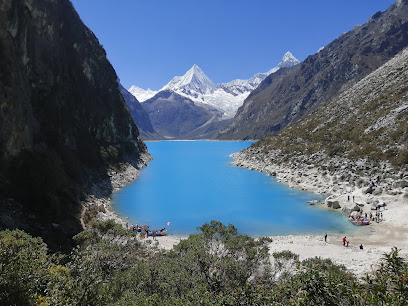
Huascaran
Explore the breathtaking beauty and adventure of Huascaran, Peru's highest peak, where nature and culture converge in stunning harmony.
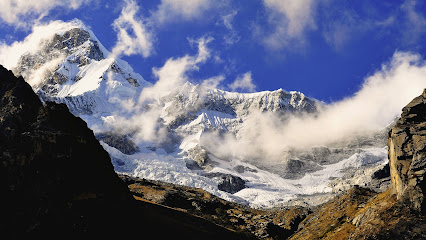
Lake 69
Experience the breathtaking beauty of Lake 69, a turquoise gem nestled in the Peruvian Andes, perfect for adventurers and nature lovers alike.
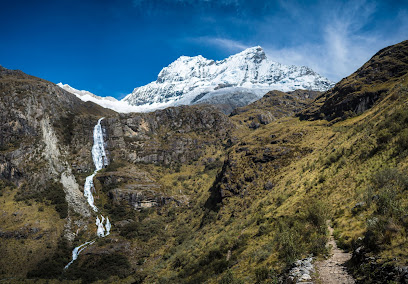
Templo de Wilcahuain
Explore the ancient wonders of Templo de Wilcahuain, a stunning archaeological site that showcases the rich history of the Wari civilization in Peru.
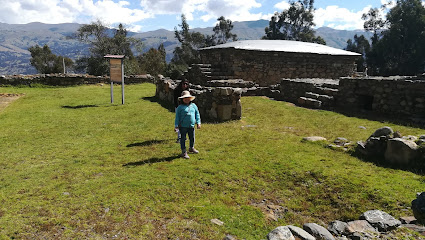
Huascaran Park
Discover the stunning landscapes and diverse wildlife of Huascaran Park, a UNESCO World Heritage site in the heart of the Peruvian Andes.
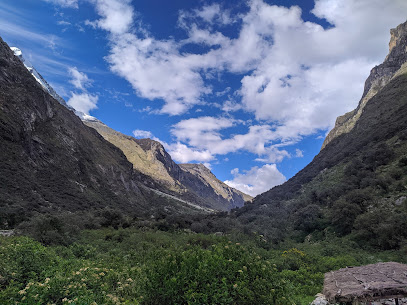
Huandoy
Discover Huandoy, a breathtaking mountain peak in the Peruvian Andes, offering stunning views, thrilling climbs, and rich local culture.
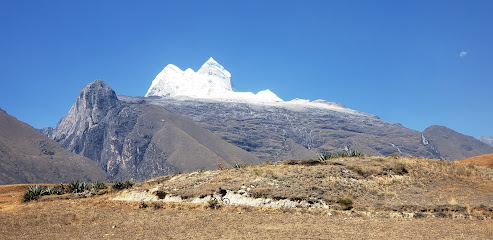
Callejon de Huaylas
Experience the breathtaking beauty of Callejon de Huaylas, a stunning ravine in Peru surrounded by majestic mountains and rich cultural heritage.
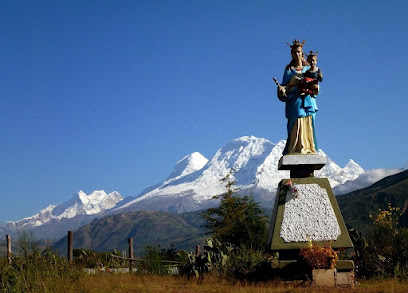
Huascarán
Discover the breathtaking beauty of Huascarán, Peru's highest peak and a paradise for adventure seekers and nature lovers alike, nestled in the majestic Andes.
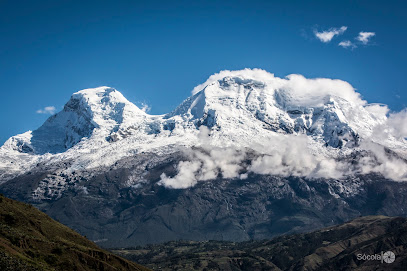
Park Nacional Huascaran - Ticket control
Explore the breathtaking landscapes and rich biodiversity of Park Nacional Huascaran, a true gem of the Peruvian Andes.
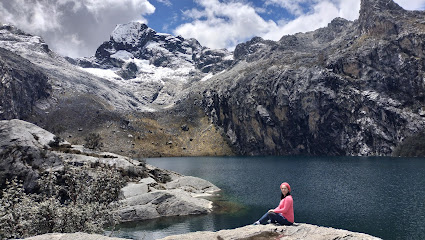
Huascarán Laguna de Llanganuco National Park
Experience the breathtaking beauty of Huascarán Laguna de Llanganuco National Park, a natural wonder in the heart of Peru with stunning lagoons and majestic mountains.
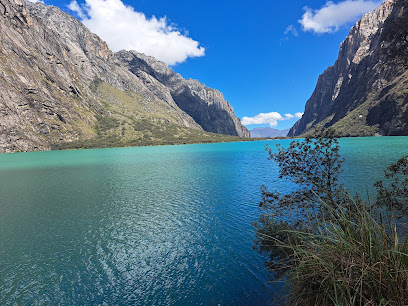
Unmissable attractions to see
CampoSanto Yungay
Explore CampoSanto Yungay, a serene memorial park in Yungay, Peru, honoring the resilience of a community lost to nature's fury.

PLAZA DE ARMAS CARHUAZ
Experience the rich culture and stunning views at Plaza de Armas Carhuaz, the vibrant heart of this picturesque Peruvian town.
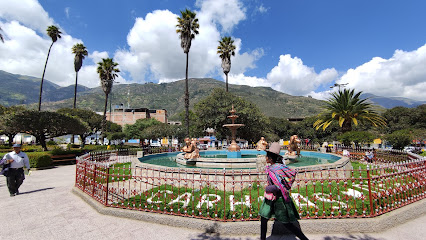
Plaza De Armas - Yungay - Ancash
Explore the scenic beauty and cultural richness of Plaza De Armas in Yungay, a tranquil park perfect for relaxation and local festivities.
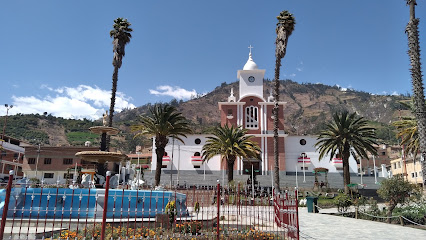
Túnel Punta Olímpica
Discover the stunning Túnel Punta Olímpica, an engineering marvel in the Peruvian Andes offering breathtaking views and unforgettable adventures.

Caraz Dulzura
Explore the breathtaking landscapes and rich culture of Caraz Dulzura, a top tourist attraction in Peru, perfect for nature lovers and adventurers alike.
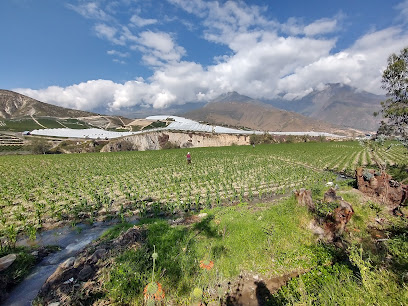
Lagunas de Llanganuco
Experience the breathtaking beauty of Lagunas de Llanganuco, where turquoise lakes meet the majestic peaks of the Peruvian Andes.
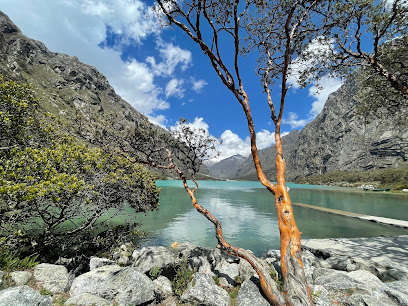
Sitio Arqueológico TUMSHUKAYKO
Explore the archaeological wonders of Tumshukayko, a hidden gem in Caraz, Peru, offering breathtaking landscapes and rich ancient history.
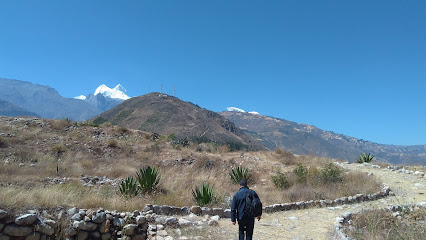
Bruja Armanan
Explore Bruja Armanan in Carhuaz, Peru - a magical tourist attraction blending stunning landscapes, rich culture, and captivating legends.

Huascarán Park
Explore the breathtaking landscapes, diverse wildlife, and towering peaks of Huascarán Park, a paradise for nature lovers and adventure seekers in Peru.
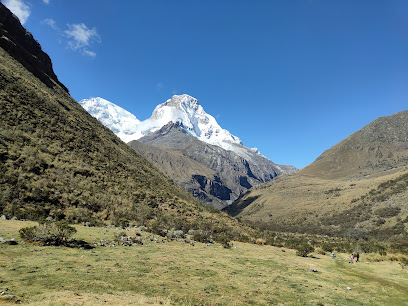
Cabaña de laguna Cancaragá
Discover the serene beauty of Cabaña de Laguna Cancaragá, a breathtaking lagoon in Peru's stunning landscape, perfect for nature lovers and adventurers.

Obelisc
Discover the Obelisc in Yungay, a monumental tribute to history surrounded by breathtaking landscapes, perfect for cultural exploration and reflection.
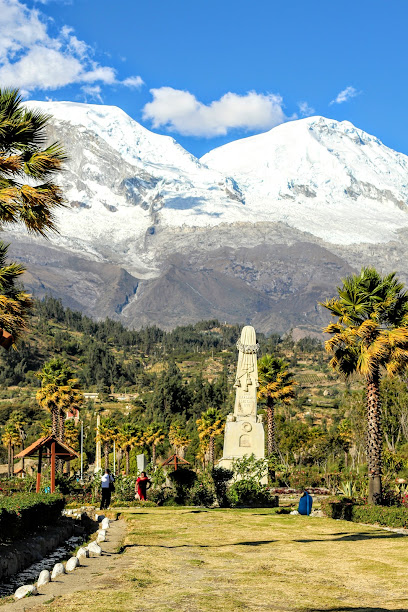
Huaraz Zipline Adventures
Experience the thrill of soaring through the Andes at Huaraz Zipline Adventures, a perfect blend of adventure and stunning mountain views.
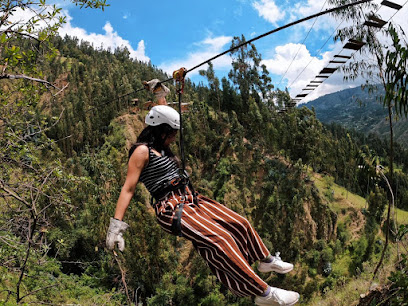
Parque Turístico Entre Cordilleras
Experience thrilling outdoor adventures and breathtaking views at Parque Turístico Entre Cordilleras, a top tourist attraction in Tarica, Peru.
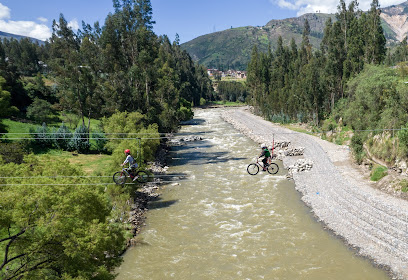
Huascarán
Discover the breathtaking beauty and adventure of Huascarán, Peru's highest peak and a stunning glacier in the Andes.
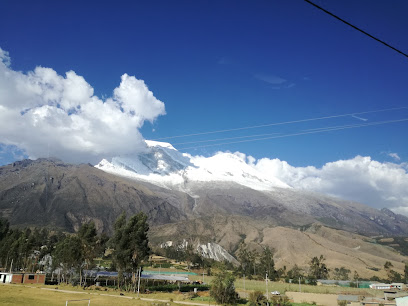
Laguna de wicrococha
Experience the peaceful charm of Laguna de Wicrococha, a hidden treasure in Peru, perfect for nature lovers and adventure seekers alike.
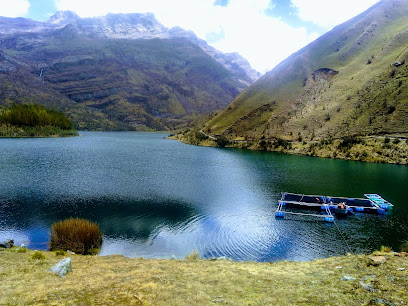
Essential places to dine
Don Cuy
Experience authentic Peruvian cuisine at Don Cuy in Huaraz – where traditional flavors meet modern culinary artistry.
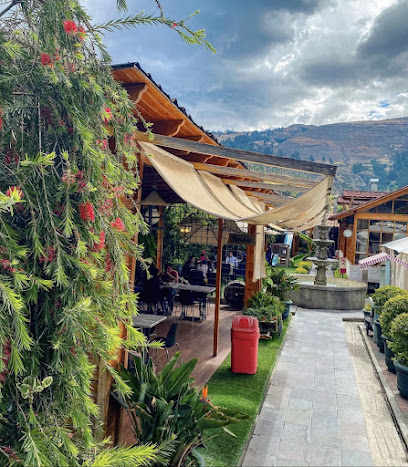
El Fogón
Experience authentic Peruvian cuisine at El Fogón in Huaraz - where every dish tells a story of tradition and flavor.
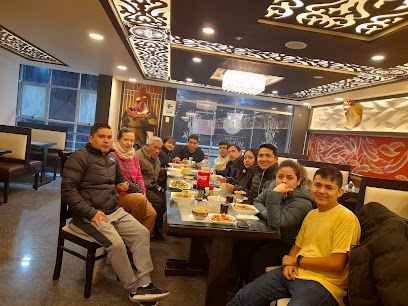
Trece Buhos
Experience authentic Peruvian flavors at Trece Buhos in Huaraz – where grilled delights meet a vibrant atmosphere.
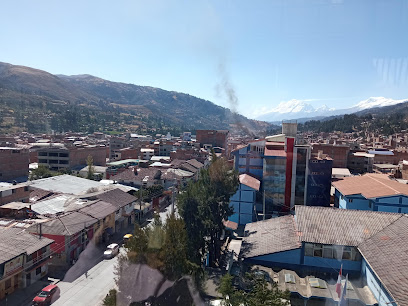
Trivio Resto Bar
Discover the vibrant flavors of Peru at Trivio Resto Bar in Huaraz, where exceptional cuisine meets a lively atmosphere.
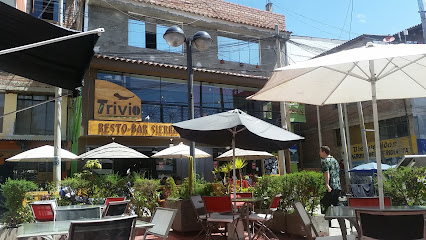
Cafe Andino
Experience the authentic flavors of Peru at Café Andino in Huaraz – where great food meets cozy ambiance.
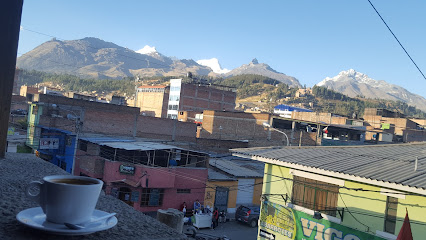
Mi Comedia - Pizzeria
Discover Mi Comedia - Pizzeria: A taste of Italy in Huaraz, renowned for delicious pizzas and warm hospitality.
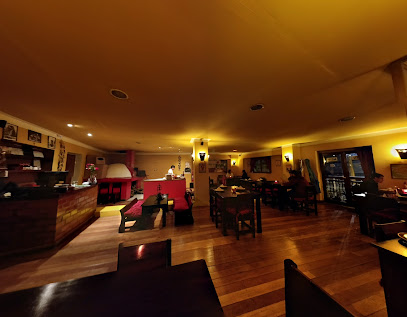
Chilli Heaven
Experience the vibrant flavors of authentic Indian cuisine at Chilli Heaven in Huaraz – a culinary haven for food lovers.

PAKTA Restaurante
Discover authentic Peruvian flavors at PAKTA Restaurante in Yungay – where tradition meets modern culinary artistry.
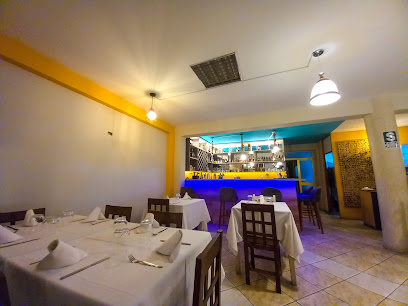
Wayta - El Chef Andino
Discover the essence of Peruvian cuisine at Wayta - El Chef Andino in Huaraz, where tradition meets modern culinary artistry.
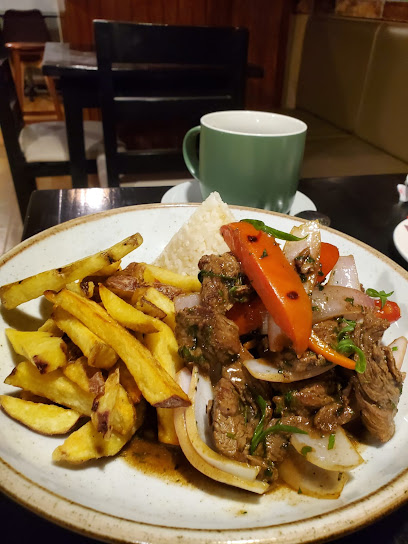
Jose Olaya
Discover authentic Peruvian cuisine at Jose Olaya in Huaraz – where fresh ingredients meet traditional flavors.

Bosque Del Prado
Discover Bosque Del Prado: A culinary haven in Provincia de Huaylas serving authentic Peruvian dishes amidst stunning Andean landscapes.
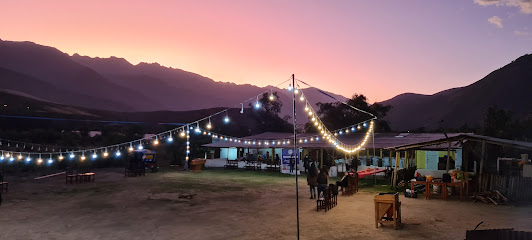
Callejón restaurante Huaraz
Experience authentic Peruvian cuisine at Callejón Restaurante in Anta, Huaraz – where every dish tells a story.
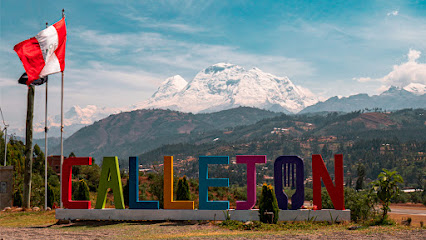
Las Lomas - Recreo Club Campestre
Experience exquisite Peruvian cuisine at Las Lomas - Recreo Club Campestre amidst stunning landscapes in Yungay.
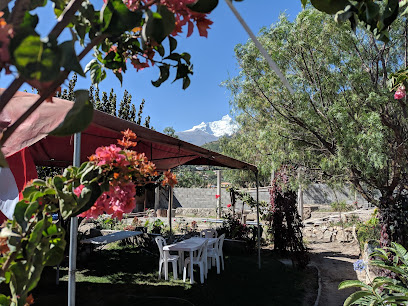
Ala qué rico
Experience exceptional grilled dishes and gastropub delights at Ala Qué Rico in Huaraz - where culinary tradition meets modern taste.

Restaurant Chifa Polleria Guilla
Discover authentic Peruvian flavors at Restaurant Chifa Polleria Guilla in Huaraz – a culinary gem blending tradition with unique tastes.

Markets, malls and hidden boutiques
Huascaran Park
Explore the breathtaking landscapes and diverse ecosystems of Huascaran Park, a national treasure in the heart of Peru's Andes.
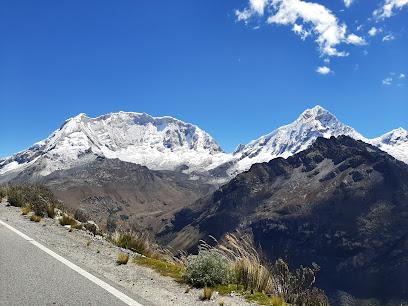
KAMILAS STORE - Detalles de amor, Regalos, juguetes, mochilas
Explore Kamila's Store in Caraz for unique gifts, charming toys, and delightful backpacks that capture the spirit of Peru.

REGALOS Y DETALLES EL CHINITO
Explore the vibrant gift shop Regalos y Detalles El Chinito in Carhuaz for unique Peruvian handicrafts and memorable souvenirs.
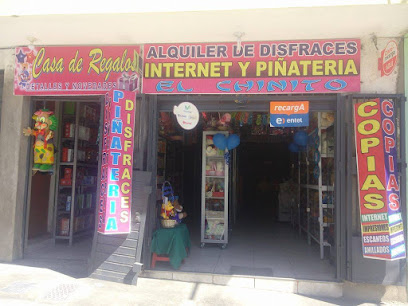
Comercial Bazar Ninoshka
Explore the vibrant atmosphere of Comercial Bazar Ninoshka in Yungay, where shopping meets local culture and delightful dining.

Boutique Biely Lover
Boutique Biely Lover: Your gateway to unique fashion and local style in Yungay.

Tienda Yo Kawaii
Experience the charm of Peru at Tienda Yo Kawaii, your go-to destination for unique gifts and kawaii treasures in Caraz.

Boutique CYNTHIA FERRER
Explore the vibrant fashion scene at Boutique CYNTHIA FERRER, a stylish clothing store in Yungay, Peru, offering contemporary Peruvian designs.
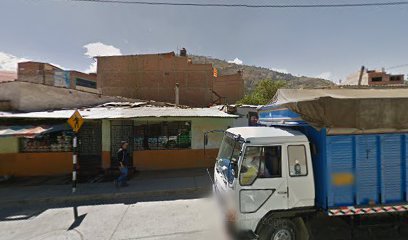
BOUTIQUE BORVAK
Explore the unique blend of contemporary and traditional styles at Boutique Borvak, Yungay's premier women's clothing store for fashionable treasures.
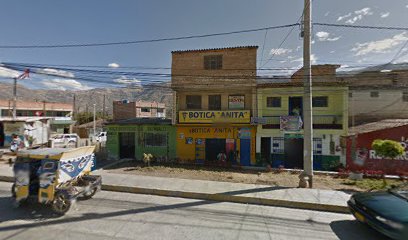
Hecho con Amor
Discover the charm of Carhuaz at Hecho con Amor, where unique local crafts and colorful novelties come together in a delightful shopping experience.

Violeta Fashion Boutique
Explore unique fashion at Violeta Fashion Boutique in Yungay, where local style meets trendy apparel and personalized service.

Pinkis
Explore Pinkis Gift Shop in Caraz for unique souvenirs and local crafts that capture the essence of your Peruvian adventure.

Tiendita local
Explore the vibrant local grocery culture at Tiendita Local in Yungay, offering authentic Peruvian products and a taste of everyday life.
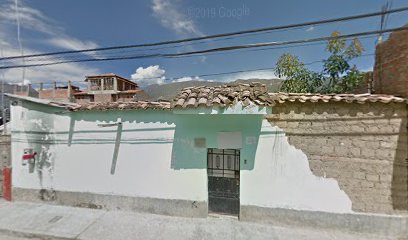
Venta de Zapatillas Online
Discover stylish footwear at Venta de Zapatillas Online in Carhuaz, where quality meets local charm for all your travel needs.

RENTAL SHOP
Discover outdoor adventures in Carhuaz with top-quality rentals and expert advice at the Rental Shop.

Las Rosas de Canela
Discover the beauty of floral artistry at Las Rosas de Canela, a premier florist in Carhuaz, Ancash, Peru, offering stunning arrangements for every occasion.

Essential bars & hidden hideouts
Kuya Kuya Coctelería Profesional Novoandina - Huaraz
Discover the vibrant fusion of Andean flavors and modern mixology at Kuya Kuya Coctelería Profesional Novoandina in Huaraz.
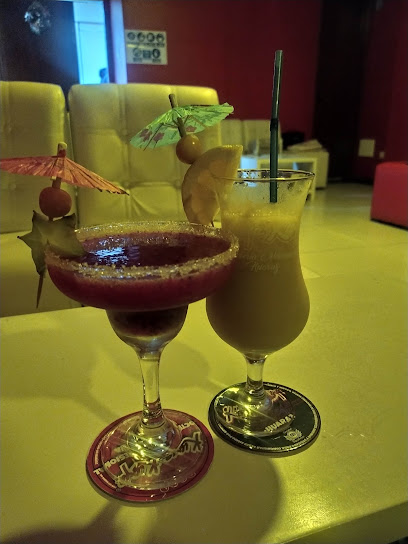
Killa bar
Discover the vibrant nightlife at Killa Bar in Huaraz, where culture meets fun in a delightful atmosphere perfect for relaxation and socializing.

Bar CACIQUE
Experience the vibrant nightlife of Huaraz at Bar CACIQUE, where local culture meets spirited fun in a welcoming atmosphere.

El Alquimista Rooftop Bar
Discover El Alquimista Rooftop Bar in Huaraz, where breathtaking views meet exceptional cocktails in a vibrant atmosphere.
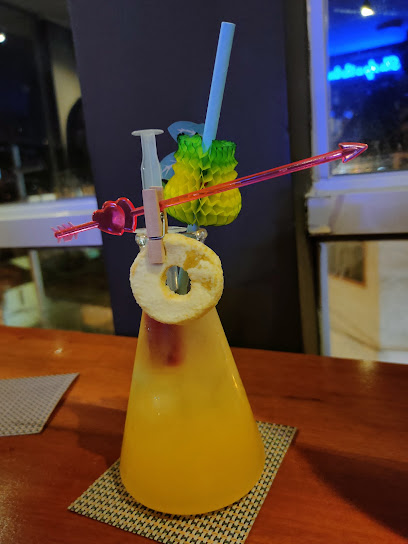
CORNER ROCK SNACK BAR
Experience the lively atmosphere of Corner Rock Snack Bar in Huaraz, where locals and tourists unite for drinks and snacks in a vibrant setting.

C'Kretos Gastro Bar
Experience the vibrant flavors and ambiance of C'Kretos Gastro Bar in Huaraz, where culinary creativity meets local Peruvian culture.

Místico karaoke restobar
Discover the lively Místico Karaoke Restobar in Caraz, where music, food, and fun unite for an unforgettable night out.
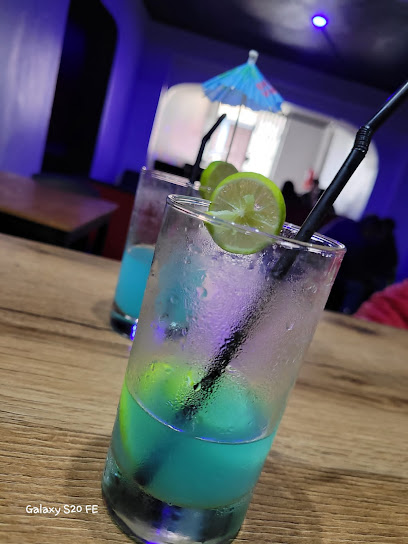
Bar Chochos Y Piqueos
Discover the vibrant atmosphere and local flavors at Bar Chochos Y Piqueos in Carhuaz, a perfect spot to unwind amidst stunning Andean landscapes.
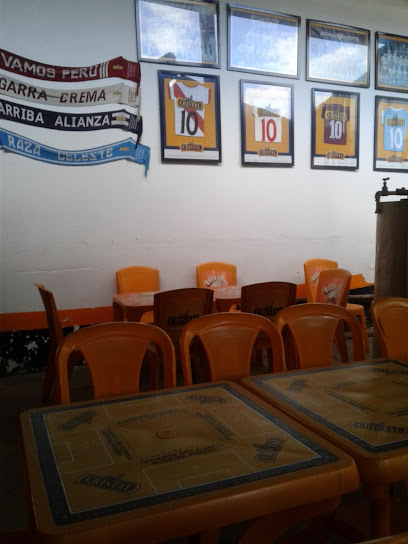
RESTO BAR La Esquina
Experience the best of Peruvian and international flavors at RESTO BAR La Esquina, a cozy gastropub in Carhuaz.

PATIO BAR
Discover the vibrant atmosphere of Patio Bar in Huaraz, where refreshing drinks and local culture come together for an unforgettable experience.
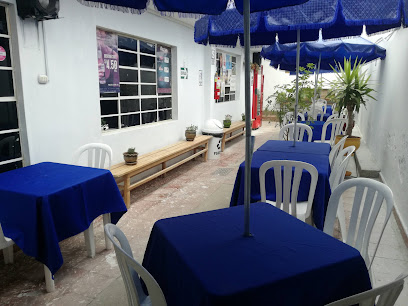
CHAC BAR (CHACPIBAR)
Experience the vibrant atmosphere of Chac Bar in Carhuaz, where local culture meets delicious drinks in a lively setting.
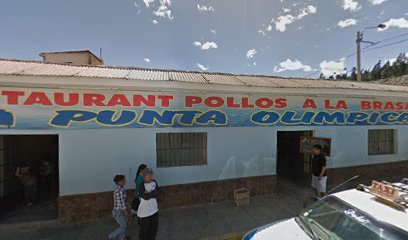
Cachema Bar
Discover Cachema Bar in Huaraz, where delightful drinks and a cozy atmosphere await after your adventures in the Andes.
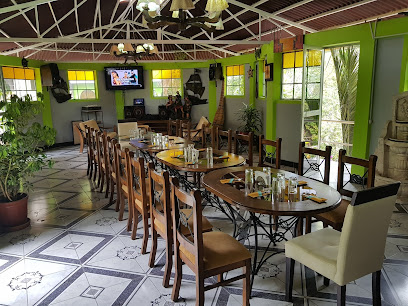
YUNGAY
Explore the breathtaking beauty and rich history of Yungay, a hidden gem in Peru's stunning Cordillera Blanca.

El Bunker vip - resto bar yungay
Discover the vibrant atmosphere of El Bunker VIP in Yungay, where great drinks, delicious snacks, and friendly service create unforgettable memories.
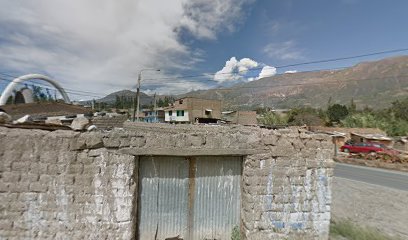
Craft Beer House
Explore the Craft Beer House in Carhuaz for a delightful selection of local brews and a vibrant atmosphere perfect for relaxation and fun.
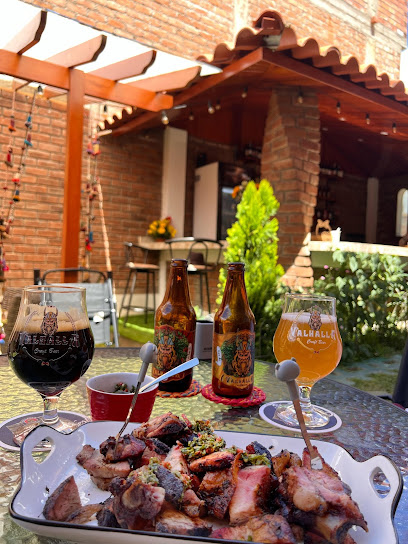
Local Phrases about Huascaran National Park
-
- Hello¡Hola!
[oh-la] - Goodbye¡Adiós!
[ah-dee-ohs] - YesSí
[see] - NoNo
[noh] - Please/You're welcomePor favor/De nada
[por fah-vor/deh nah-dah] - Thank youGracias
[grah-see-ahs] - Excuse me/SorryDisculpe/Lo siento
[dee-skool-peh/loh see-ehn-toh] - How are you?¿Cómo estás?
[koh-moh ehs-tahs] - Fine. And you?Bien. ¿Y tú?
[bee-ehn. ee too] - Do you speak English?¿Hablas inglés?
[ah-blahs een-glays] - I don't understandNo entiendo
[noh ehn-tee-ehn-doh]
- Hello¡Hola!
-
- I'd like to see the menu, pleaseMe gustaría ver el menú, por favor
[meh goos-tah-ree-ah behr ehl meh-noo, por fah-vor] - I don't eat meatNo como carne
[noh koh-moh kahr-neh] - Cheers!¡Salud!
[sah-lood] - I would like to pay, pleaseMe gustaría pagar, por favor
[meh goos-tah-ree-ah pah-gahr, por fah-vor]
- I'd like to see the menu, pleaseMe gustaría ver el menú, por favor
-
- Help!¡Ayuda!
[ah-yoo-dah] - Go away!¡Vete!
[veh-teh] - Call the Police!¡Llama a la policía!
[yah-mah ah lah poh-lee-see-ah] - Call a doctor!¡Llama a un doctor!
[yah-mah ah oon dohk-tohr] - I'm lostEstoy perdido
[ehs-toy pehr-dee-doh] - I'm illEstoy enfermo
[ehs-toy ehn-fehr-moh]
- Help!¡Ayuda!
-
- I'd like to buy...Me gustaría comprar...
[meh goos-tah-ree-ah kohm-prahr] - I'm just lookingSolo estoy mirando
[soh-loh ehs-toy mee-rahn-doh] - How much is it?¿Cuánto cuesta?
[kwan-toh kweh-stah] - That's too expensiveEsto es demasiado caro
[ehs-toh ehs deh-mah-syah-doh kah-roh] - Can you lower the price?¿Puedes bajar el precio?
[pweh-dehs bah-hahr ehl preh-see-oh]
- I'd like to buy...Me gustaría comprar...
-
- What time is it?¿Qué hora es?
[keh oh-rah ehs] - It's one o'clockEs la una
[ehs lah oo-nah] - Half past (10)Las diez y media
[lahs dee-ehs ee meh-dee-ah] - MorningMañana
[mah-nyah-nah] - AfternoonTarde
[tahr-deh] - EveningNoche
[noh-cheh] - YesterdayAyer
[ah-yehr] - TodayHoy
[oy] - TomorrowMañana
[mah-nyah-nah] - 1Uno
[oo-noh] - 2Dos
[dohs] - 3Tres
[trehs] - 4Cuatro
[kwah-troh] - 5Cinco
[seen-koh] - 6Seis
[says] - 7Siete
[syeh-teh] - 8Ocho
[oh-choh] - 9Nueve
[nweh-veh] - 10Diez
[dee-ehs]
- What time is it?¿Qué hora es?
-
- Where's a/the...?¿Dónde está...?
[dohn-deh ehs-tah] - What's the address?¿Cuál es la dirección?
[kwal ehs lah dee-rehk-syon] - Can you show me (on the map)?¿Puedes mostrarme (en el mapa)?
[pweh-dehs mohs-trar-meh (ehn ehl mah-pah)] - When's the next (bus)?¿Cuándo es el próximo (bus)?
[kwan-doh ehs ehl proh-ksee-moh (boos)] - A ticket (to ....)Un boleto (a ....)
[oon boh-leh-toh (ah)]
- Where's a/the...?¿Dónde está...?
History of Huascaran National Park
-
Long before Huascaran National Park was established, the area was inhabited by ancient Andean civilizations. The most notable among them were the Chavín, who thrived around 900 to 200 BCE. They left behind impressive archaeological remains, such as the Chavín de Huantar, which are located just outside the park boundaries. These early inhabitants developed complex societies and intricate agricultural terraces, evidence of which can still be seen today in the park's high-altitude landscapes.
-
During the 15th century, the Incas expanded their empire to include the region now known as Huascaran National Park. Their influence is evident in the well-preserved ruins, such as the ancient road networks and stone constructions found within the park. The Incas revered the towering peaks, especially Mount Huascarán, which they considered sacred. These mountains were seen as apus, or mountain spirits, and were integral to their spiritual and cultural practices.
-
The arrival of the Spanish in the 16th century dramatically altered the cultural landscape of the region. The Spanish conquest led to the decline of indigenous civilizations and the imposition of colonial rule. Many native traditions were suppressed, but some elements survived and were blended with Catholic practices. The evidence of this cultural amalgamation can still be observed in the local festivals and religious practices of the communities living around the park.
-
Huascaran National Park was officially established in 1975 to protect the unique biodiversity and cultural heritage of the region. The park spans over 340,000 hectares and encompasses some of the highest peaks in the Andes, including Mount Huascarán, Peru's tallest mountain. This designation aimed to preserve the area's natural beauty, as well as its historical and archaeological sites. In 1985, UNESCO recognized the park as a World Heritage Site, further solidifying its importance both nationally and internationally.
-
In recent decades, significant efforts have been made to conserve the unique ecosystems and cultural heritage of Huascaran National Park. Various local and international organizations collaborate to address challenges such as climate change, human encroachment, and the preservation of indigenous knowledge. These efforts ensure that the park remains a sanctuary for its diverse flora and fauna, as well as a living museum of the rich cultural history of the Andean people.
Huascaran National Park Essentials
-
Huascaran National Park is located in the Ancash region of Peru. The closest major city is Huaraz, which can be reached by bus or private vehicle from Lima, the capital city of Peru. The bus journey from Lima to Huaraz takes approximately 8-10 hours and offers a scenic route through the Andes. Several bus companies provide comfortable and reliable services. Alternatively, you can fly from Lima to Anta Airport, which is about an hour's drive from Huaraz.
-
Once in Huaraz, you can use local buses, taxis, or hire a private vehicle to reach different parts of Huascaran National Park. Public buses and colectivos (shared taxis) are economical options for traveling within the region. For more remote areas or specific trails, hiring a private vehicle or joining a guided tour might be more convenient. Bicycle rentals are also available for those who wish to explore the park on two wheels.
-
The official currency in Peru is the Peruvian Sol (PEN). Credit cards are widely accepted in Huaraz, but it's advisable to carry cash, especially when traveling to more remote areas or small villages within the park. ATMs are available in Huaraz, and it's a good idea to withdraw sufficient cash before heading into the park. Small bills and coins are useful for local markets and minor purchases.
-
Huascaran National Park is generally safe for tourists. However, standard precautions should be taken. Avoid walking alone at night, especially in unfamiliar areas. Petty theft can occur, so keep an eye on your belongings in crowded places. Be cautious in markets and bus stations. While Huaraz is relatively safe, certain neighborhoods may have higher crime rates. Consult local advice on areas to avoid.
-
In case of emergency, dial 105 for police assistance or 116 for medical emergencies. Huaraz has hospitals and clinics that can provide medical care. It's advisable to have travel insurance that covers medical emergencies and high-altitude sickness, as the park is located at high elevations. Pharmacies in Huaraz offer over-the-counter medications. For mountain rescue, contact local authorities or your tour operator.
-
Fashion: Do wear layers and bring appropriate gear for high-altitude hiking. Avoid flashy clothing that may attract unwanted attention. Religion: Do respect local customs and traditions. Some areas may have religious significance to local communities. Public Transport: Do be patient and courteous on public transport. Don't be loud or disruptive. Greetings: Do greet locals with a friendly 'Hola' or 'Buenos días.' A handshake is common. Eating & Drinking: Do try local dishes like ceviche and cuy. Don't drink tap water; always opt for bottled or purified water.
-
To experience Huascaran National Park like a local, visit during festival times when local communities celebrate their traditions. Engage with local guides who can offer insights into the park's history and ecology. Try visiting lesser-known trails and villages to experience authentic Andean culture. Don't miss the opportunity to try traditional Andean foods and drinks, such as pachamanca and chicha de jora.
Nearby Cities to Huascaran National Park
-
Things To Do in Trujillo
-
Things To Do in Lima
-
Things To Do in Chiclayo
-
Things To Do in Huancayo
-
Things To Do in Ayacucho
-
Things To Do in Ica
-
Things To Do in Piura
-
Things To Do in Loja
-
Things To Do in Machu Picchu
-
Things To Do in Cuenca
-
Things To Do in Cusco
-
Things To Do in Iquitos
-
Things To Do in Macas
-
Things To Do in Guayaquil
-
Things To Do in Salinas











